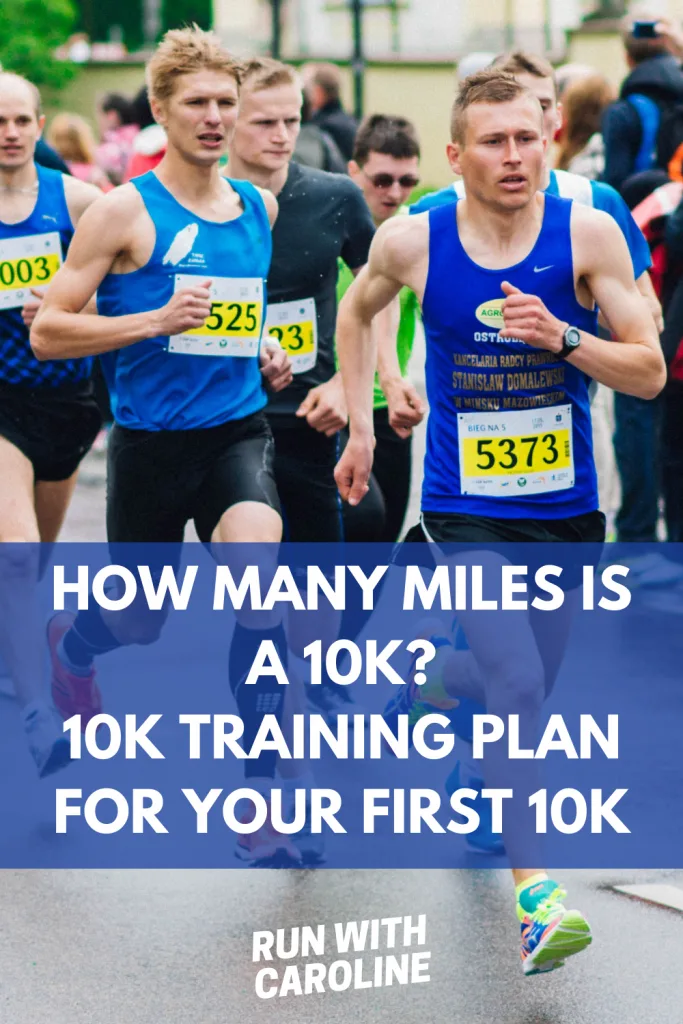If you’re preparing for your initial 10k, you might be curious about the distance equivalent to a 10k in miles?
Many joggers proceed to participate in a 10k race after finishing a 5k.
This guide will provide tips on training for a 10k, whether you are a novice runner or have already completed a few 5k races.
In this guide, we will delve into:
Ready?
Let’s begin!

A 5k in miles is 3.1 miles.
If you are training for a 10k run, there are a few things you might need to consider.
First and foremost, it is essential to build up your stamina and endurance so that you can effectively complete a 6.2 mile run on the day of the competition.
You will also need to ascertain your pace race k10 so that you won’t be able to run 5k at a pace of more than 10k.
How many miles is a 10 kilometer race?
A 10k in miles is 6.2 miles.
For comparison, a 5k in miles is 3.1 miles, therefore a 10k is essentially twice the distance.
What is the average 10k time by age and gender?
The typical duration for a 10k race relies on various factors, such as your age, sex, and fitness levels.
Your past injuries and the type of terrain on the race course can also influence your average time for a 10k race.
If you are new to running, then completing a 10k race in 50 to 70 minutes is an attainable objective.
If you can complete a 10k run in 45 minutes or less, then this is a significant accomplishment.
Average 10k time by age and gender
Below are the average 10k timings based on age and gender:
| Age | Male | Female |
| 16-19 | 46:36 | 01:00:21 |
| 20-24 | 51:40 | 59:50 |
| 25-29 | 53:31 | 01:02:25 |
| 30-34 | 54:21 | 01:02:31 |
| 35-39 | 54:21 | 01:02:09 |
| 40-44 | 53:31 | 01:02:37 |
| 45-49 | 55:35 | 01:03:27 |
| 50-54 | 56:12 | 01:04:04 |
| 55-59 | 59:00 | 01:07:41 |
| 60-64 | 58:48 | 01:09:51 |
| 65-69 | 01:03:02 | 01:18:57 |

What is a respectable 10k duration?
Your 10k duration will rely on different elements, comprising your age, sex, running background, and fitness levels.
A respectable 10k duration is 49:43, which represents the typical 10k time for individuals of all age groups and genders.
This implies that you must maintain a pace of 8:00 minutes per mile / 4:58 minutes per kilometer.
What is the quickest 10k duration?
Rhonex Kipruto, a marathon athlete, currently possesses the global record for the men’s 10k race, completing it in 26 minutes and 24 seconds. This translates to a pace of 4 minutes and 15 seconds per mile / 2 minutes and 38 seconds per kilometer.
Jepkosgei Joyciline, the previous record holder for the half marathon, currently holds the world record for the women’s 10k race with a time of 29:43. In terms of pace, this translates to 04:47 minutes per mile or 02:58 minutes per kilometer.
What is a suitable speed for a 10k race?
Speed is essentially how quickly you need to run to accomplish your desired race time.
If you have set a goal for yourself to run for 60 minutes, for instance, your pace should be 6 minutes per kilometer or 9.39 minutes per mile.
Utilize a jogging speed calculator to ascertain your pace according to your preferred race duration and distance.
Below you will discover a 10k speed chart to assist you in determining your fundamental pace based on your objective race time.
10k pace chart
| 10k race pace (mins per mile) | 10k race time |
| 05:00 | 31:04 |
| 06:00 | 37:17 |
| 07:00 | 43:30 |
| 08:00 | 49:43 |
| 09:00 | 55:55 |
| 10:00 | 1:02:08 |
| 11:00 | 1:08:21 |
| 12:00 | 1:14:34 |
How to prepare for a 10k race.
The initial stage in preparing for a 10k race is to locate an appropriate 10k training program.
A beginner 10k training plan will typically last between 8 to 10 weeks depending on your running experience and desired race time.
If you are an intermediate or advanced runner, you could potentially prepare for a 10k race within 4 to 6 weeks by utilizing an intermediate-level training program.
A comprehensive 10k training program will incorporate the subsequent runs and workouts:.
Easy run.
Simple runs are intended to be exactly that – ‘effortless’.
During these runs, as long as you traverse the necessary distance and jog at a relaxed tempo, don’t fret about velocity or tempo.
Week per runs easy three have will you plan this in runs when conversation a hold comfortably to able be should you.
Long run.
The extended duration is crucial for any 10k training program to assist in developing your staying power and strength.
The distance to cover is your goal. If you need to, take walking breaks. Run at a slow pace for long runs.
Speed training.
Speed training is an excellent method to enhance your velocity and strength as a runner.
This type of training is designed to get you running at a faster pace so you feel comfortable running at certain speeds.
Interval training, tempo running, strides and Fartlek training are all forms of speed training that you can include in your training routine.
Strength training.
Strength training is also known to be essential for any runner, as it helps reduce the risk of injury, improves their economy and form, and enhances their strength.
Numerous joggers are tormented by runner’s knee and IT band syndrome, which are the curse of runners, but one of the main advantages of strength training is that it aids in decreasing the likelihood of typical running injuries.
Strength training also aids in maintaining your strength and overall health as a runner.
Cross training.
Cross training is essentially incorporating diverse forms of exercise into your regimen, such as strolling, swimming, biking, or practicing yoga.
These activities are typically cardiovascular in character, and can be seen as ‘active recuperation’.
Planning your endurance and resilience as a runner also benefits cycling, such as incorporating cross-training. Adding different forms of training will enhance variety.

9 10k training tips
Now that you have knowledge about the elements of preparation for a 10k, here are 9 recommendations on how to engage in a 10k competition.
Number one, get ready.
The pre-run warm-up is crucial before any jog, regardless of whether you’re participating in a 5k, 10k, half marathon, or full marathon.
Your warm up should include running form drills. Additionally, dynamic stretching and jogging are the two main parts of a warm up.
#2 Relax.
The cooldown period following a jog is a crucial part of the recuperation procedure.
Engaging in a cool-down routine can aid in diminishing the likelihood of injury and alleviating muscle discomfort following a jog.
Make sure to incorporate static stretches into your cool down routine.
#3 Engage in stretching and using a foam roller.
Another essential component of the recuperation procedure is stretching and using foam rollers in the intervals between your jogging sessions.
While participating in stretching improves your flexibility and mobility as a runner, integrating foam rolling has been shown to improve blood circulation in your muscles.
Take a look at my guide on the advantages of foam rolling for runners for additional information and suggestions.
#4 Energize your jogging.
Proper nutrition is essential when it comes to running longer distances such as a 10k.
You’ll want to ensure that your body is properly fueled by running before and after eating the right foods for recovery aid.
In order to aid in the restoration of muscles, it is advisable to consume protein after a run, whereas carbohydrates should serve as your primary source of energy prior to a run.
#5 Remember to keep yourself properly hydrated.
On your run, when you’re dehydrated, you can feel sluggish. On a run, dehydration can also contribute to that ‘heavy legs’ feeling.
Make sure you’re consuming sufficient water during your training schedule and on the day of the race itself.
#6 Put on the appropriate running footwear.
A good set of running shoes, along with the appropriate running equipment, can determine the success or failure of your race.
Ultimately, you do not desire a set of jogging footwear that feels unpleasant or causes blisters on the day of the race.
Ensure you wear the right pair of running shoes throughout your day race and training. You can find tips on choosing the right running shoes in my running shoes guide.
#7 Take a break and recuperate.
Unfortunately, within the running community, overtraining remains a prevalent issue that arises due to insufficiently incorporating sufficient rest or recovery periods between runs.
A well-designed training schedule will incorporate one to three days of rest.
Make sure not to be tempted to run on your days of rest – make sure to use these rest days. Using these rest days will help minimize the risk of injury and burnout, so avoid being tempted to run on your days of rest with other words. Make sure to use these rest days.
#8 Master your technique.
The main objective of teaching proper running form is to minimize the risk of injury and enhance athletic performance in the most effective manner possible.
Body position, manner of stepping, and pace are all components of running technique.
You can discover additional details on running form in my guide on running form and technique.
#9 Become a member of a running club.
Being a part of a running group is a great way to boost your motivation, confidence, and accountability as it encourages you to run, inspires you, and holds you accountable for your runs.
A jogging club can also serve as a fantastic support system.
And who knows – you might also establish new acquaintances in the journey!